Yikes, the United States is crumbling all around you. You trusted your leaders and they betrayed you. You followed the laws, you obeyed the rules, and you worked hard. Now you have a nice life (sort of) on rent. One missed paycheck and your life goes down the toilet. Not only that, but as you get older you notice that the life of working towards a “career”, is not worth not having close friends, and a social life. You find yourself wishing for the days of when you were in your 20’s and had the world by it’s tail. You look outwards…
As one MM reader…
Guys, as an ethnic Chinese living in America, (dfw) this year I took the penalty hit and withdrew my 401k savings (Im in my mid 30s) and also since last year I basically stopped paying income taxes (marked myself exempt even though Im not) and this year in 2021 I opt out of all savings, retirement plan, healthcare insurance etc etc… So effectively Im netting well over someone who makes 6 figures who plays by the rules. I also got paid the $1200, $600, and $1400 stimulus checks lol… Plus I have couple credit cards, one with around $35,000+ credit line… am single no kids, no wife/gf, no car or home payments, etc….
Im frontloading life while I still can. Our local Costco has A5 Waygu fedex from Japan by air… Im on WhatsYourPrice and going on dates with all the pretty women… Im planning to go on a luxury vacation this year, overseas if Covid permitting…
You read about exotic lands, but (for many) it’s actually a little too late for you. You are too old to learn a difficult (to learn) language. You don’t have the resources to pack up and move to a new nation, and even if you did, you ties to your family, and society are too great. Certainly Asia is not on your list of locations to “bug out” to. So you start looking for some place closer.
There’s Canada, and there’s about a thousand other Americans like you that have the same idea. So many, in fact, that Canada is not really going to be an easy “bail out” location. It’s still an option. It’s sort of “America lite”. It’s an American territory, maybe not on paper, but certainly in practice. But it is nice, and it is close.
And they do have some absolutely great maple syrup. Absolutely stunning fishing, and some fine, fine folks that do appreciate drinking beer on long cold winter nights. It’s something that is worthy of consideration.
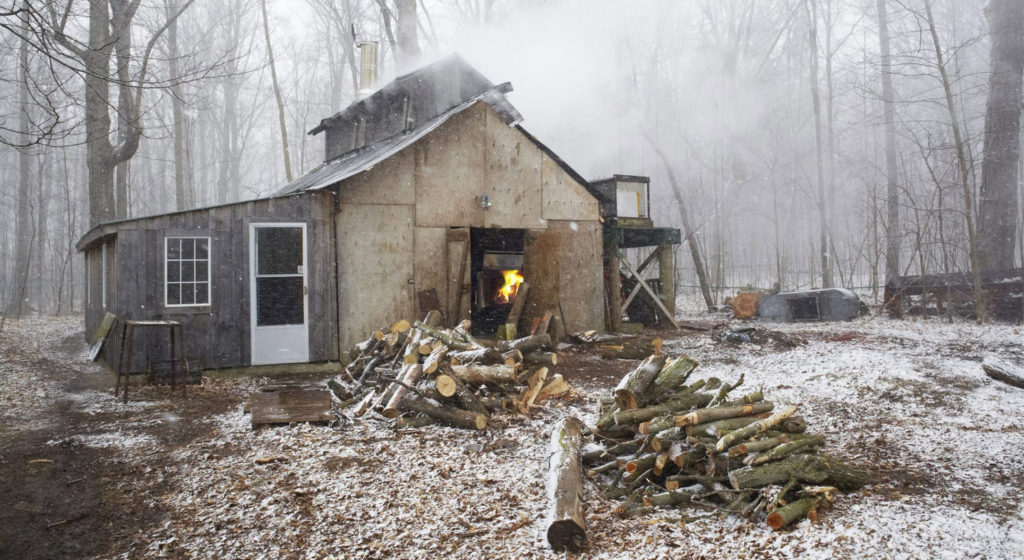
And while I do live in a tropical area, there is a trade off (well, actually many tradeoffs). And with this I have to point out that if you move to a place that is really comparatively different from what you are uncomfortable of, you will (no matter how great you like it otherwise) end up being uncomfortable. It’s just something that comes with the territory.
I grew up in the North East, and refer to Pennsylvania as my boyhood “stomping ground”, yet I love where I am now. And while I would enjoy a visit back “home” and let my wife and family experience the sights and sounds of the USA that I grew up in, it will feel alien to me when I return back to it. Our experiences change us.
Canada might not be all the different. Canada might be just sane enough, just similar enough, just good enough for you all to consider a move there. Just like an entire horde of others who are escaping and fleeing the United States like rats leaving a sinking ship.
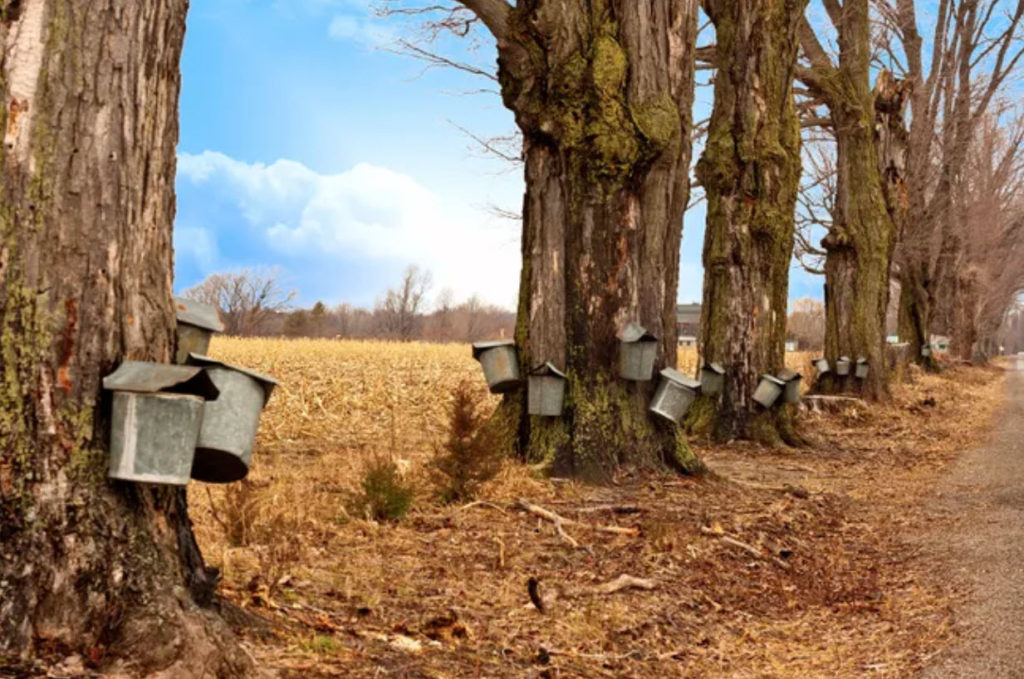
Where else?
There’s Mexico. And many others are deciding to go South of the border. It’s an option, and if you have the right means, and friends you can probably carve a life out for yourself there. It’s something worthy of consideration. Others are following in your footsteps. That’s for certain.
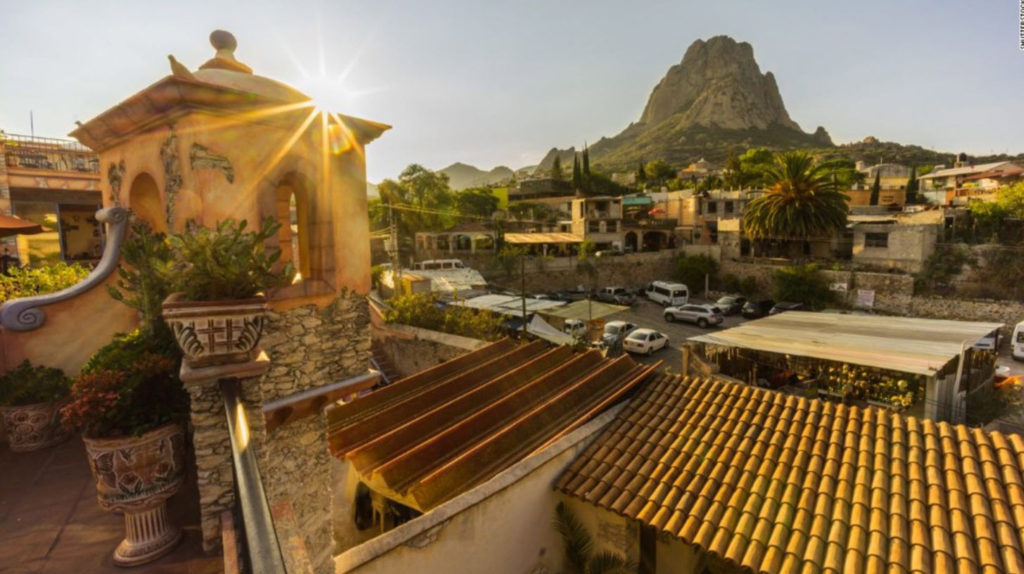
How about considering something a little further South?
Like in South America, South.
If you have some funds, and some skills, and can understand some basic Spanish this might be the option for you. If you are reading this and concerned about all the changes that America is STARTING to go though, it might just be wise to sit the changes out and ride them from under the wide canopy of a large swaying palm tree.
I myself have never explored South America. Though I would like to try. It’s certainly on an old “bucket list” of things that I wanted to do at one time, and the history of the entire continent is so fascinating. It would be a pleasure to live in such an area… provide that you choose the location, the lifestyle wisely.
With that in mind here is a partial reprint of an article by Jeff Thomas. Reprinted as found, and edited to fit this venue. All credit to the author.
This is a reprint of…
Where Should I Go?
by Jeff Thomas
One of the questions I’m most often asked is, “I’ve decided to get out of my home country before it’s too late. Which countries are the best ones to go to?”
Unfortunately, answering this question is akin to answering, “What’s the best place in town for me to have lunch?” The question is too broad to answer. It will depend upon what sort of food you like, how much you want to spend, whether you want a restaurant with a liquor license, etc. Likewise, the “best” destination will depend upon your age, whether you’ll need to work, whether you have school-age children, whether you’re seeking luxurious amenities or whether you’re hoping to lower your cost of living, etc.
No one can tell you what the best destination is for you. In fact, they can’t even recommend a “top five.” The choice depends entirely upon the individual’s needs and aspirations.
Although I’ve explained this many times over the years, I’m still asked repeatedly, “Yeah, but what are your personal choices and why?”
Again, it matters little what my choices are, but I must agree that the second question, of “Why?” is quite valid. So, here they are:
The Cayman Islands
My primary home is the Cayman Islands. Cayman is a highly prosperous Caribbean country where great opportunity for investment exists. The government understands that their own livelihood is dependent upon the island continuing to be attractive to foreign investors and expatriates have virtually the same legal rights as locals.
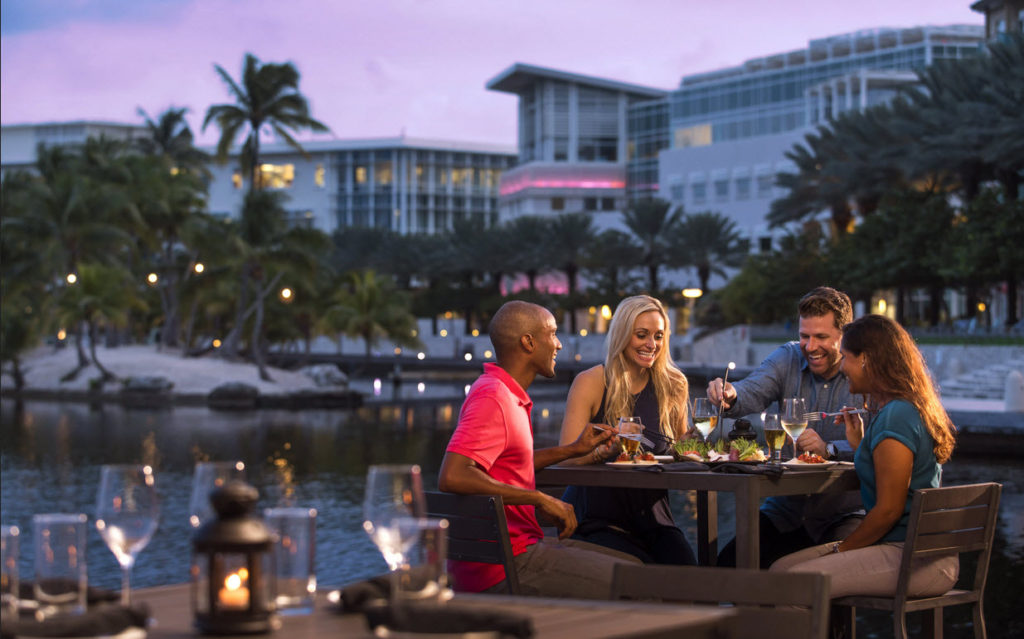
Prejudice toward expatriates is minimal, racism is almost non-existent, as 70% of Caymanians are of mixed race. Crime is contained.
In a major economic collapse, Cayman is likely to not only survive, but prosper.
On the other hand, this is not a country like, say, Belize, where an expat can pitch a tent on the beach and be welcome.
It’s a relatively costly place to live (similar to New York or London), but incomes also tend to be commensurately higher. In addition, there is zero direct taxation, which means that the government largely keeps out of your life.
First and foremost, though (in my view), is that the indigenous people are West Indian, which provides a greater level of kindness and a higher level of humanity than in most of the “first world.”
It’s an easy place to live and work, if you have requisite skills, but it’s not a place to “retire on a budget.”
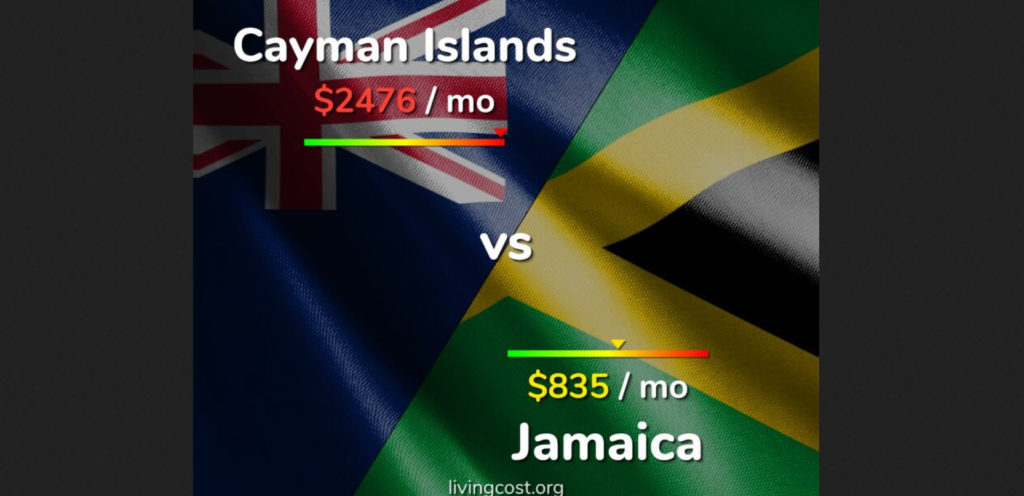
Colonia, Uruguay
My second home is in a small town of 14,000 people in Uruguay. It’s large enough to have all the basic businesses and services, but not large enough to be impersonal. Again, the primary concern of tolerant, supportive people is a major attraction.
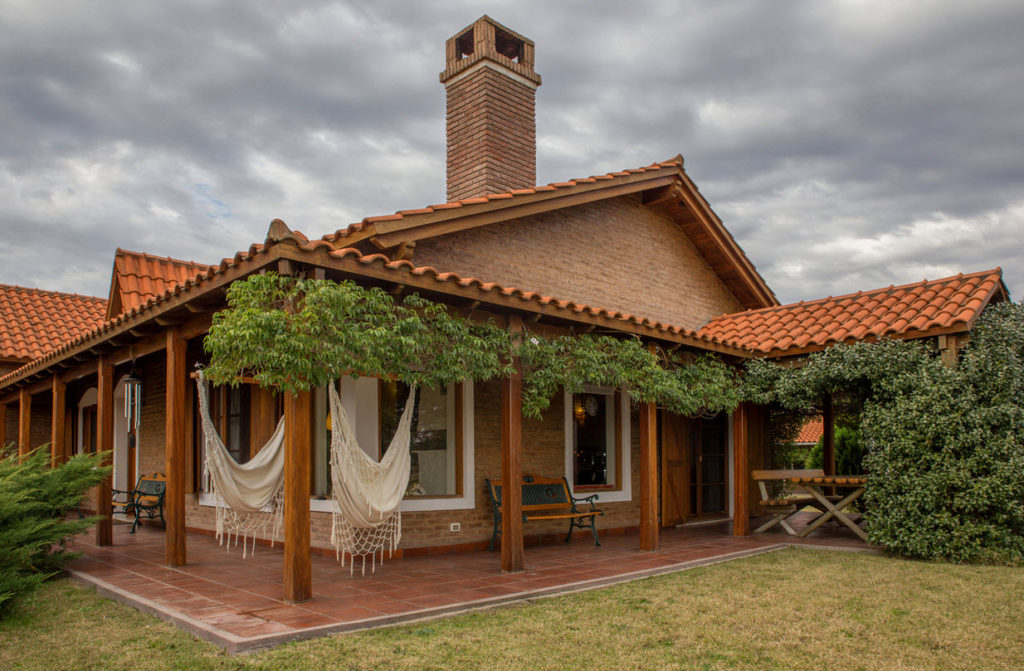
Buenos Aires is right across the river, providing a buoyant economy to the small, antique town, even when Argentina is experiencing crisis times.
Yet it remains “a country apart” and is largely unaffected by the Argentine economic rollercoaster.
Uruguay produces 90% of what it consumes and exports only 10% of what it produces, so it’s able to be independent of international crises, as it was during the two world wars.
Uruguay is also rich in rivers and farmland and produces an excess of all-natural food. On the other hand, the economy is chronically sluggish and it’s a poor place to seek employment or open a business.
Uruguay is south of the equator, which means that, if there’s nuclear war in the northern hemisphere, Uruguay will be minimally impacted by fallout, since the southern hemisphere has an independent weather system from the northern hemisphere.
It therefore has a different set of advantages and disadvantages from the Cayman Islands. As a “Plan B”, it may therefore be preferable to “Plan A”, depending on what befalls the world in the future.
Cafayate, Argentina
But, there’s also a “Plan C” – ironically, located in Argentina. The town of Cafayate is in the extreme northern province of Salta, so far away from the disorganised and underfunded government in Buenos Aires that it largely ignores diktat from the Capitol.
Cafayate is a small town (about 13,000) where living expenses are quite low.

This means that for the well-heeled, everything is inexpensive, but it also means that this is not a good place to seek employment. Additionally, locally-available goods are generally on the basic side. Someone seeking an escape from a crisis elsewhere, however, is likely to enjoy a decidedly peaceful existence here.
But Cafayate has an unusual and interesting advantage, in that, years ago, the foresighted Doug Casey created an upscale community just outside of the town, which has a golf course, polo, an excellent hotel and property for sale on which to construct luxury homes.
La Estancia de Cafayate is populated by very interesting and largely libertarian people of many nationalities.
For this reason, there are, in essence, two Cafayates. The two enhance each other and residents of La Estancia enjoy the unusual benefit of an upscale community, yet low day-to-day expenses.
In each of the above possible choices, the objective is to provide as content and untroubled a life in a time of great potential crisis as can be found.
Quito, Ecuador
For someone who is retired, but may soon lose his 401 K and social security to an economic collapse, a better choice might be to move to Quito, Ecuador. Rent a corner bodega and turn it into a trendy coffee shop for the tourists. You’d live a modest life, but would be well looked-after and enjoy a peaceful existence.
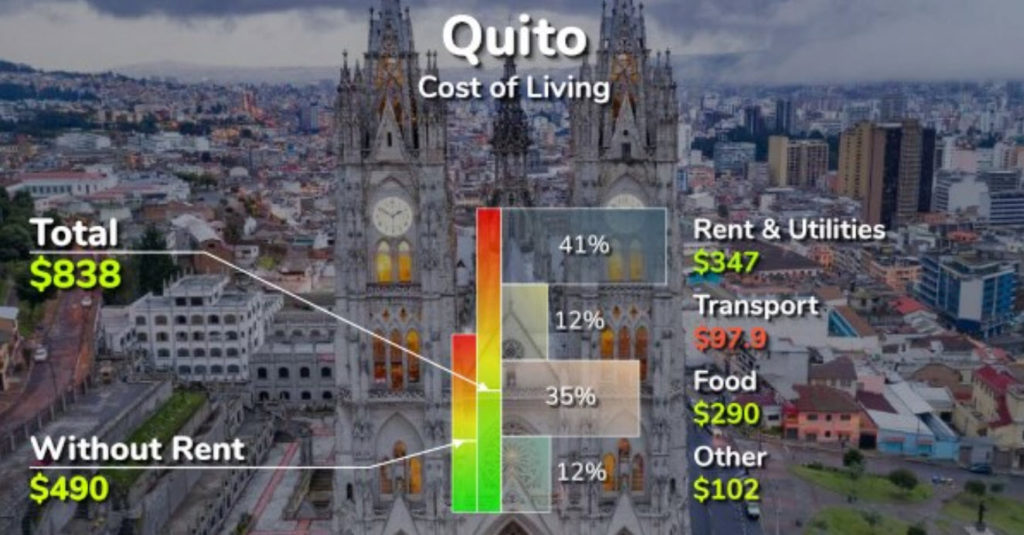
Chiang Mai, in Thailand
Another choice might be Chiang Mai, in Thailand, where, although you’d be regarded as farang (and could not own property), you’d be treated very well by locals and have opportunities for investment. You’d be well away from the problems of the capitol, Bangkok, in a still sizable town of 130,000 and live very well, very inexpensively.

But again, the above are locations that are of interest to me, as I’ve researched them and each one has attractions that appeal to my personal needs and economic situation.
The reader is encouraged to do his own investigations, beginning with the internet and leading to actual visits.
One thing is certain: the former “free world” is now in an economic bubble of historic proportions. For those living in a country that’s at risk, there will be an extended period (at least ten years, but very possibly more) during which there will be dramatic decline.
This decline will most certainly be reflected in the standard of living, but, worse, will also be reflected in the quality of life.
When a nation of people who have been living a spoiled life of unrealistic expectations suddenly has the plug pulled on the largesse, they tend to behave very badly. In such a case, we’re unlikely to see a repeat of America after its revolution, in which the people rolled up their sleeves and got to work, due to their self-reliance and strong work ethic.
Instead, we’re more likely to see something akin to the aftermath of the French or Russian revolutions, in which the people expected an easier life. When they didn’t get it, they reacted in a primitive fashion, destroying the source of what might otherwise have been prosperity. In each case, a true recovery was therefore very long in coming.
And you don’t want to be anywhere near that buildup and explosion of pent-up anger and frustration.
You want to flee and go to a “safe place”…
Green Acres
Oliver Wendall Douglas, a New York lawyer, gives up his law practice to follow his lifelong ambition of becoming a farmer. He and his reluctant wife, the Hungarian Lisa, move to the tiny town of Hooterville, where they try to assimilate to country living. Given the kookiness of the town’s residents, that may be difficult — for Oliver, that is.
-The Ten Best GREEN ACRES Episodes of Season Five
In the old 1960s’ television show “Green Acres”, the main character was always talking about how much he loved the quiet and peaceful life in the country. His name was Mr. Douglas. He would always go into these tirades about the life in the big city and the “rat’s race” there. His wife would repeat his views about “the rats racing in the city”. And while it’s all fun and games, it appears that many Americans now find themselves in the same conundrum as Mr. Douglas.
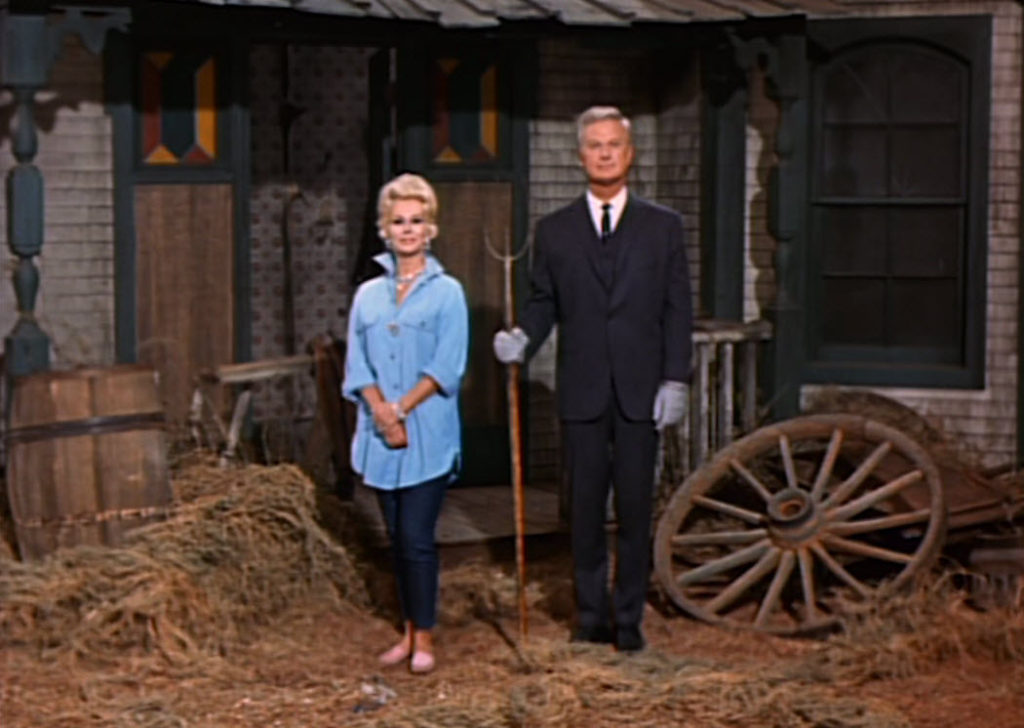
And when we look at the situation, it gives us a glimpse at our new reality…
… the television show was a comedy all right, but the culture shock that one experiences when they leave their homeland for a “better life” stays true to form. Consider the television show “Green Acres”…
THE WHOLE RIDICULOUS PREMISE WAS BASED IN REALITY.
If it seems a bit farfetched that a city slicker would leave a lucrative career in finance to rehab a dying farm without knowing a thing about agriculture, well, at least one person has tried it. “I got the idea from my stepfather when I was a kid,” Sommers, the show’s creator, said in a 1965 interview.
“He wanted a farm in the worst way and he finally got one. I remember having to hoe potatoes. I hated it. I won’t even do the gardening at our home now, I was so resentful as a child.”

Not so crazy after all.
Especially now.
EDDIE ALBERT DIDN’T FIND THE PREMISE RIDICULOUS AT ALL.
Eddie Albert, who starred as Oliver Wendell Douglas, had previously eschewed television roles, believing that the medium was “geared to mediocrity.” But after his agent explained the idea behind Green Acres, Albert was hooked.
“I said, ‘Swell; that’s me. Everyone gets tired of the rat race. Everyone would like to chuck it all and grow some carrots. It’s basic. Sign me,'” he told TV Guide. “I knew it would be successful. Had to be. It’s about the atavistic urge, and people have been getting a charge out of that ever since Aristophanes wrote about the plebs and the city folk.”
And he’s right. After all, why are you all reading this article, eh?
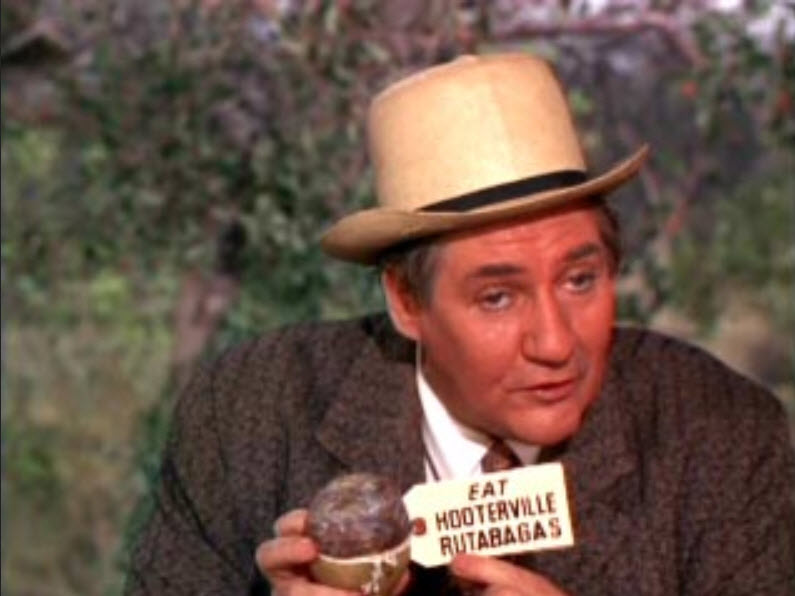
BOTH STARS HAD A LITTLE BIT OF THEIR CHARACTERS IN THEM.
Albert turned the front yard of his Pacific Palisades house into a cornfield, and also had a large greenhouse in the back where he grew organic vegetables.
Eva Gabor, who played Lisa Douglas, owned cats, dogs, birds, chickens, roosters, and rabbits. She was a little bit like her urban character, though; according to her assistant, Gabor hadn’t had the rabbits for long when she decided to show them off at a party. When she got to the hutch, it appeared that the rabbits had done what they do best, because there were suddenly quite a few more. “Didn’t I just get a pair of rabbits? Where did the others come from?” she asked her assistant. Her dinner party guests explained that rabbits were famous for their impressive reproduction.
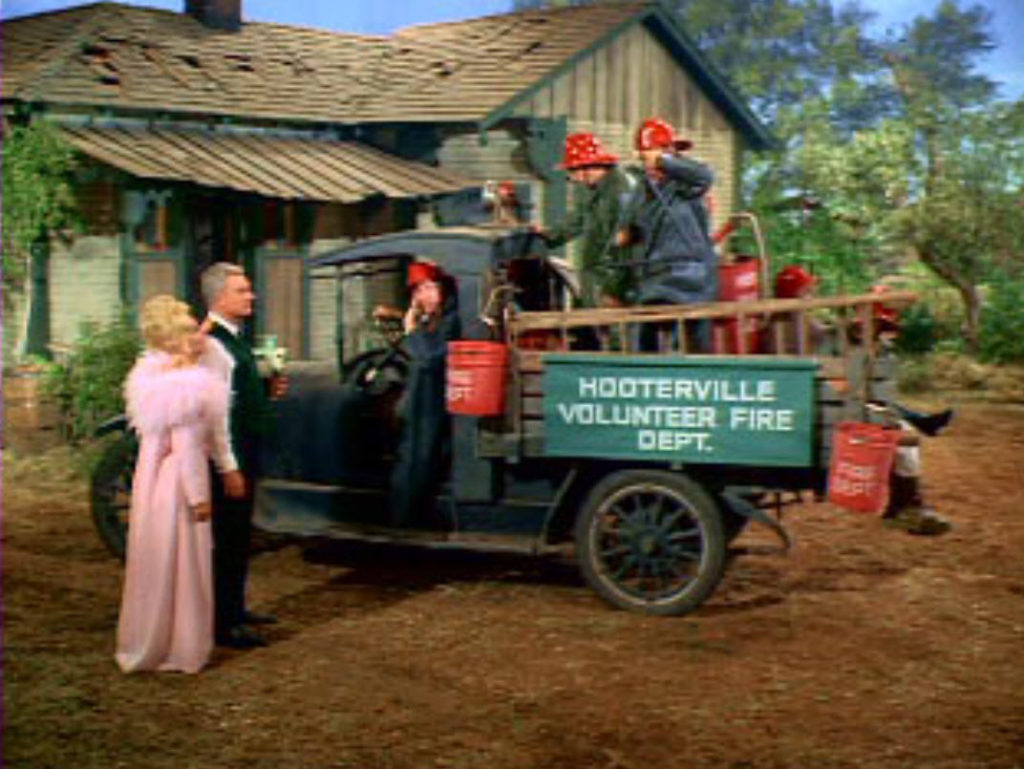
You will be surprised at how different certain ways of doing things are outside the Untied States.
IT WAS ONE OF DWIGHT D. EISENHOWER’S FAVORITE SHOWS.
During his retirement years, keeping tabs on the residents of Hooterville became one of the former president’s favorite pastimes. The Eisenhowers loved the show so much that they deemed their valet’s pet pig “Arnold” and allowed it to freely roam their house—even letting it lounge on slip-covered chairs that their grandkids weren’t allowed to sit on.
Who would figure?
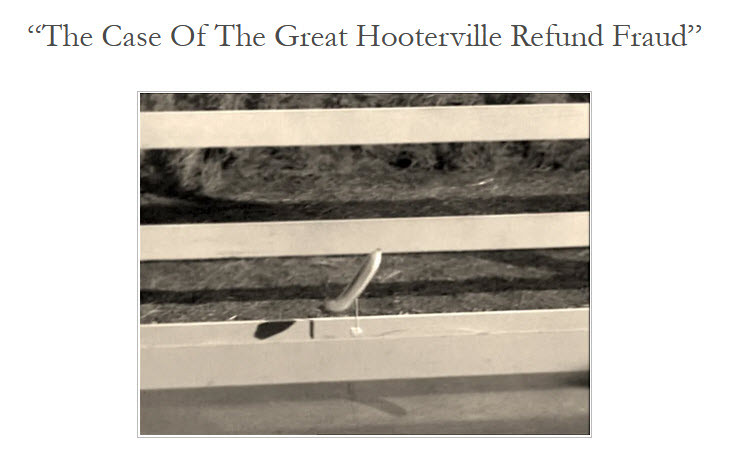
ALBERT WASN’T PLEASED WITH GABOR’S FURS AND FEATHERS.
On one occasion, Albert—an environmentalist—asked Gabor to avoid wearing an expensive outfit festooned with feathers onscreen.
When Gabor protested, saying how beautiful it was, Albert told her that he didn’t want other women to copy the fashion, causing the deaths of more birds.
“Eddie, feathers don’t come from birds,” she told him. When he asked her where she thought feathers came from, she responded, “Dahlink. Pillows! Feathers come from pee-lowz!”
“She swears that she was not teasing me!” Albert later said.
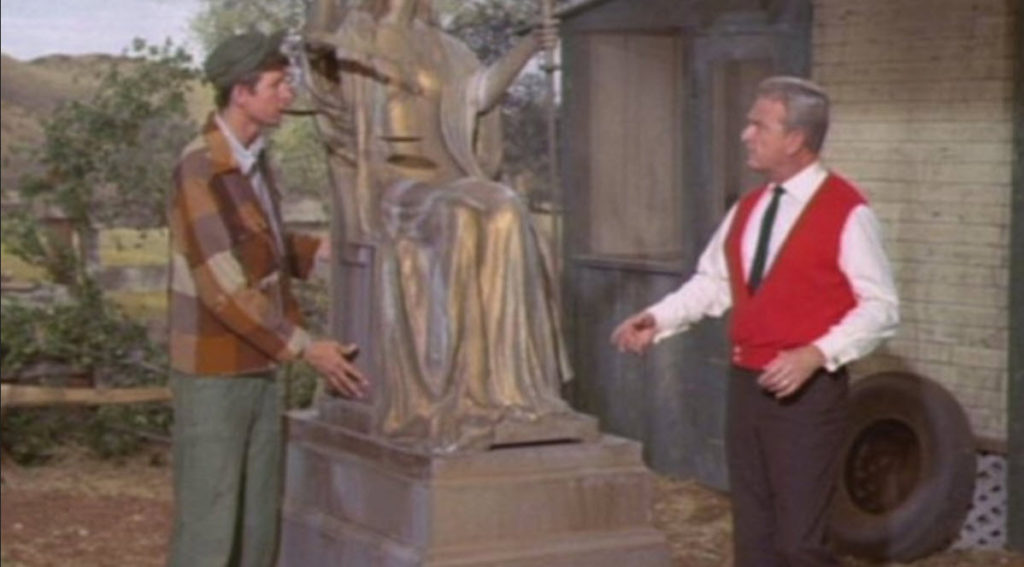
MR. HANEY WAS BASED ON ELVIS PRESLEY’S MANAGER.
Actor Pat Buttram, who played Mr. Haney, met Elvis Presley’s manager, Colonel Tom Parker, on the set of the movie Roustabout, where Buttram played the owner of a carnival. He got the part of Mr. Haney just a year later—and later stated that he used Parker as inspiration for the Green Acres swindler.
He reminds me so much of our Congressmen and Senators in Washington, DC.
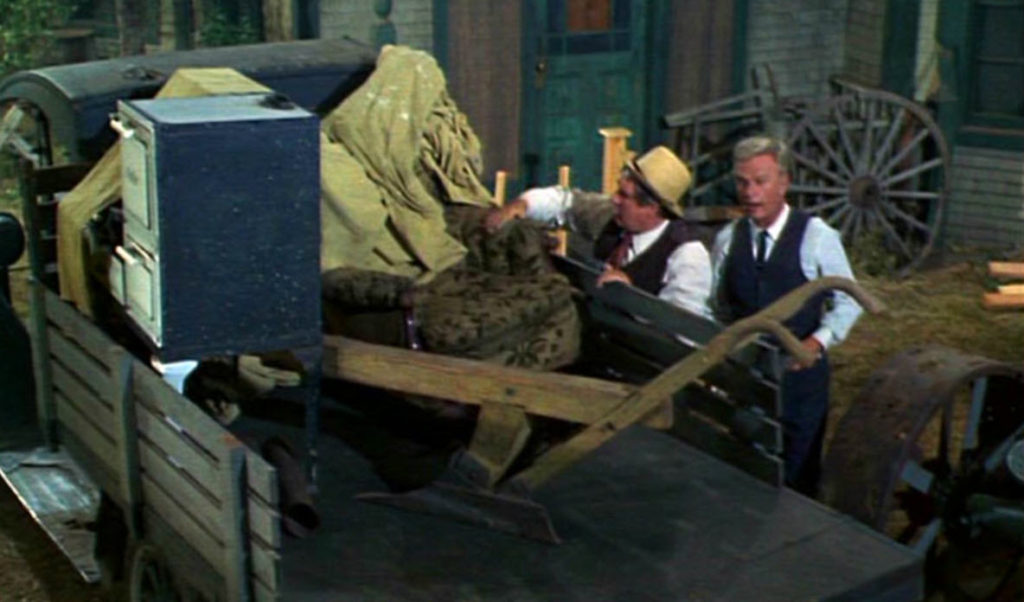
WE NEVER FOUND OUT WHERE HOOTERVILLE WAS LOCATED.
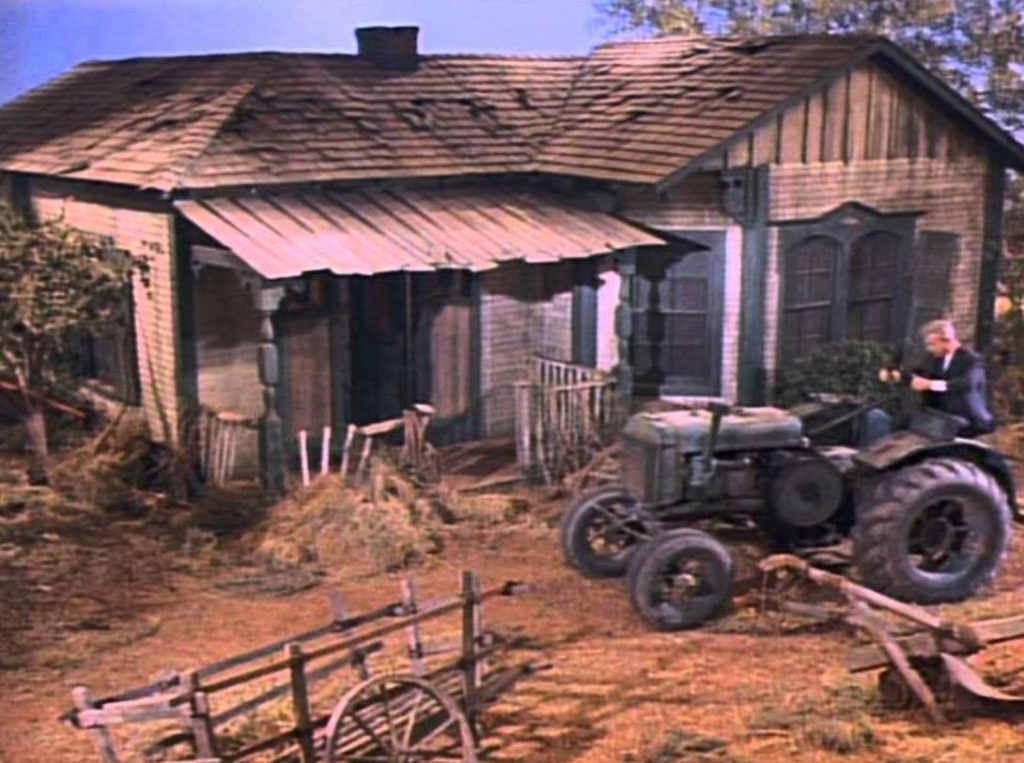
Much like The Simpsons’s Springfield, viewers never found out for sure where Hooterville was located. Though Sommers once referenced time spent on a farm in Greendale, New York, Mr. Haney stated the town was located about 300 miles from Chicago. And the accents on the show are all over the place.
THE SHOW WAS FULL OF LITTLE INSIDE JOKES.
During one episode, Lisa explains to Oliver that he needs to accept her lack of cooking skills. “When you married me, you knew that I couldn’t cook, I couldn’t sew, and I couldn’t keep house. All I could do was talk Hungarian and do imitations of Zsa Zsa Gabor.” Zsa Zsa, of course, was Eva Gabor’s real-life sister.

There are also many references to The Beverly Hillbillies and Petticoat Junction, both of which were also produced and/or written by Green Acres‘s executive producer Paul Henning. In the episode below, Hootervillians discuss putting on a local production of The Beverly Hillbillies. Lisa ends up playing Granny Clampett while Oliver stars as Jethro.
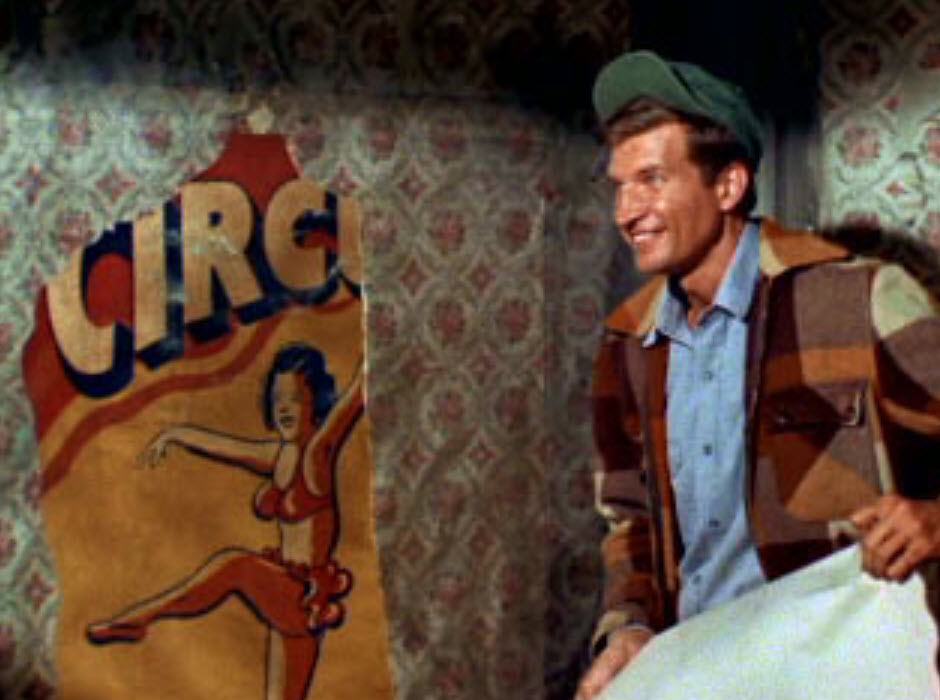
IT WAS CANCELED AS PART OF THE “RURAL PURGE” OF THE EARLY 1970s.
When Green Acres got the axe in 1971, it wasn’t the only show to go. That was the year that CBS got rid of “everything with a tree,” according to Buttram. The so-called “rural purge” also saw the demises of The Beverly Hillbillies, Petticoat Junction, Hee Haw, The Andy Griffith Show, and Lassie.
And brought in “minority oriented programming” aimed at African-Americans in urban settings.
ARNOLD THE PIG WAS NOT EATEN AT THE SHOW’S WRAP PARTY.
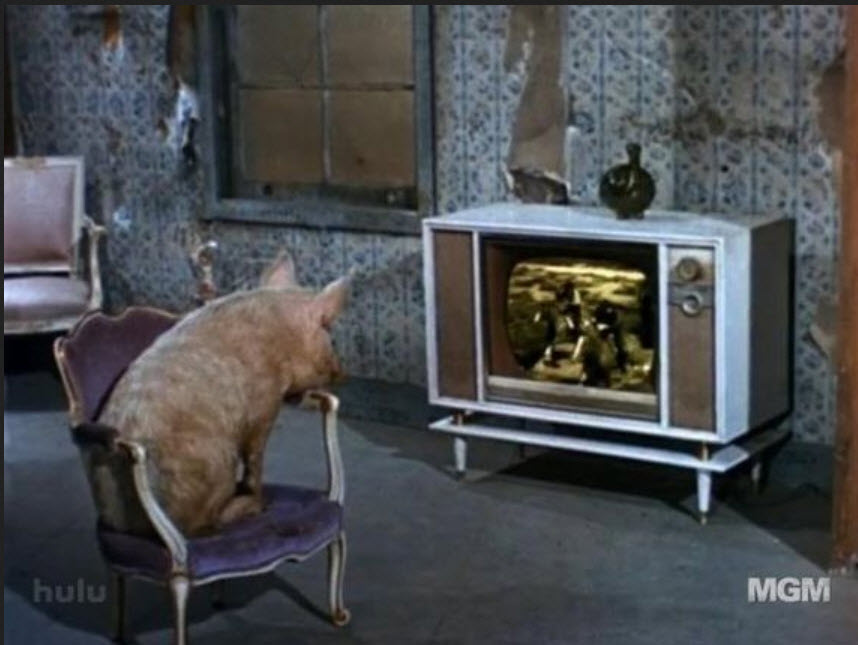
After the show wrapped, the actors were often asked what happened to Arnold the pig. On one such occasion, Tom Lester, the actor who played Eb Dawson, responded that Arnold was cooked and eaten at the luau-themed wrap party. Don’t worry—he wasn’t.
THE SHOW EXPERIENCED A REVIVAL IN THE 1990s.
In the 1990s, Nick at Nite brought Green Acres back, advertising it with the tagline, “It’s not stupid … it’s surrealism!”
Apparently they weren’t the only ones who thought so. “A professor once told me students see it as surrealistic,” Albert told People Magazine. “He said, ‘The comedy is like Pickwick Papers or Gulliver’s Travels or Voltaire.
It’s so far out that it becomes truth, deep truth.'”

Green Acres is so far out that it has become truth, deep truth.
Conclusion
It seems that most people realize that the USA is beyond hope for meaningful corrective change, and that sudden and painful change is on the menu.
Most people are afraid of this fact, but it need not be such a serious terror.
You can still move. You can still bunker down and hunker in place. You can still plan, and you can still go to a nice safe community. And when you go there, you adapt. Sure there will be some things that you will miss, and other things that you will need to adapt to. it’s called “change”, but it is also called “growth”
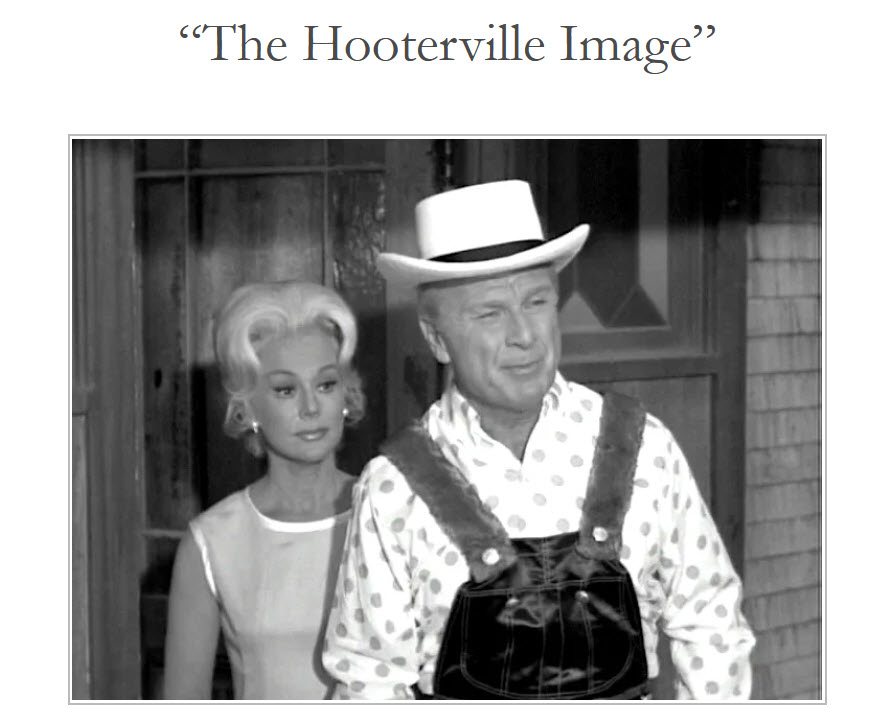
It’s never too late.
You change, and you adapt.
In any event, no matter what you decide to do, you must do it, and don’t look back.
Please be careful, plan well, and execute your plan with precision and a strong healthy affirmation / prayer campaign. I am rooting for your success.
-MM

Do you want more?
I have more posts in my SHTF – Escape! Index here…
Escape!.
Articles & Links
You’ll not find any big banners or popups here talking about cookies and privacy notices. There are no ads on this site (aside from the hosting ads – a necessary evil). Functionally and fundamentally, I just don’t make money off of this blog. It is NOT monetized. Finally, I don’t track you because I just don’t care to.
To go to the MAIN Index;
Master Index.
- You can start reading the articles by going HERE.
- You can visit the Index Page HERE to explore by article subject.
- You can also ask the author some questions. You can go HERE .
- You can find out more about the author HERE.
- If you have concerns or complaints, you can go HERE.
- If you want to make a donation, you can go HERE.
Please kindly help me out in this effort. There is a lot of effort that goes into this disclosure. I could use all the financial support that anyone could provide. Thank you very much.



There are a few options:
Option A: Quick death. Stay in the land and wait for death coming from civil war, famine, diseases, gas chamber in FEMA camps, and nuclear fire/radiation. Some saw in vision that the FEMA-military broke into people homes and shot people in front of their house for not taking Covid-19/Trump virus mRNA vaccine.
Option B: Slow death. Find a refuge place far away from big cities, preferably near Indian reservation. The Russian and Chinese army will probably leave these places alone. The Lord God had commanded the Indian chiefs not to pay evil for evil that the colonist did to their ancestors (not to hand the refugees to the conquering army). The Chinese and Russian will march through the land but won’t stay long because of nuclear radiation. The wind will carry radiation all over the place so the entire land will be uninhabitable.
Option C: Survival. Some saw in vision that the Lord called out His true remnant Christian to get up and go live in the wilderness and He put a shield/dome to protect them from nuclear radiation. This group is the 10% who will survive the apocalypse. This group is the true patriotic/peaceful American regardless of skin color, race, background, etc.
Zechariah 2:7
“Up, Zion! Escape you who dwell with the daughter of Babylon.”
Option D: Escape. Flee out to other safe countries. The earlier to do research and to plan and seek the Lord for guidance is better before the storm hits. The windows of opportunity is closing quick.
Jeremiah 51:8
“Flee out of Babylon;
leave the land of the Babylonians,
and be like the goats that lead the flock.”
https://wingsofprophecy.blogspot.com/2021/03/draw-near-to-me.html?m=1
An ancient text which was written long ago way before America was established as a nation.
風 乘 破 浪 走 華 旗
(The invading forces surrounded America and destroyed/annihilated her during an “electromagnetic” wind storm)
Isaiah 51:1
“Thus saith the Lord; Behold, I will raise up against (America) Babylon, and against them that dwell in the midst of them that rise up against me, a destroying wind”
Thanks for quoting me MM… btw I wasn’t being sarcastic at all…
The inhabitants of Easter Island built a lot of gigantic stone monuments before they all seemingly and suddenly disappeared… We know in hindsight they grew too quickly, depleted their resources, but the limited scale and size of the island provided them with no means to “grow out of the problem” long enough to reach the economics of scale to bootstrap themselves up the technology ladder by exploiting other forms of energy resources (coal, gas, fission, etc)… Likewise, our planet earth, the third rock from the sun, the pale blue dot, as it were, is like an 3D island onto itself… and our current geopolitical, macroeconomic and global civilization structures make it increasingly unlikely that we will be able to bridge the gap of “The Great Filter” and successfully transition from a largely fossil fuel and hydrocarbon/petroleum based society to that of one of fusion and other more exotic energy technologies at scale and in mass… Just like there are fundamental limits to the universe and physical reality (for example the speed of light being the ultimate speed limit which dictates the viability of forms of long term space travel) it is apparent that the laws of physics are such in this universe that it is not conducive for the evolution nor sustained survival of lifeforms reaching Type I on the Kardashev scale…
Infinite growth in a finite environment is a mathematical impossibility. Human population growth tracks precisely that of bacteria growth in a petridish right before it encounters rapid dieoff as it hits its resource constraints…
The problem is that our modern civilization is built upon both the expectation and the requirement of perpetual infinite growth in order to be sustained, and its tenet is one of always borrowing from the expectation of future growth to use as collateral to pay for the the present/current debts and expenses… essentially it is the most massive high level Ponzi Pyramid scheme of the ultimate form of kicking the can down the road that humanity has ever conjured up or invented…
There is the problem of the Energy Cliff, in that modern civilization is highly dependent upon high thresholds of EROEI (Energy Returned on Energy Invested) in order to sustain the sort of globalized Just-In-Time structures needed for modern society and trade, and to prop up the sort of high standards of living and at the enormously high levels of carrying capacity (almost 8 billion humans) that we’ve all come and grown to be accustomed to in the so-called modern world for the past hundred years or so…
Fusion is perpetually 30 year away, even solving the fast breeder nuclear fission issue will take another 2 to 3 decades to ramp up and that is precious time the world just doesn’t have left anymore. None of the renewables are energy dense enough (high threshold of EROEI) to power modern society and certainly not the kind of globalized world we have become accustomed to… for example solar has a energy payback of 2 to 3 years currently… that means for the first three years of a solar project you have net sunk energy into it and don’t make an energy profit until after that period. Whereas oil as an energy payback period of zero days, you can use it immediately to provide net positive energy and it is both a means of energy and storage of energy. The problem with solar is that it needs energy storage, and there are not enough lithium nor rare earth in the world to be able to build enough batteries to store enough energy to scale to the entire world’s current energy consumption levels even if we could achieve 100% renewable sources… (solar, wind, hydro, etc)
The human body is 70% water. You don’t have to lose the very last drop of water in your body to die. Once you lose 10% of water weight you are severely dehydrated and at the edge of death, by the time your body lost 20% of its weight in water you are already died. Likewise, modern civilization doesn’t have to run out of oil before it dies… In terms of conventional oil the world has already peaked back in 2008 and now we are relying on unconventional shale, fracking, etc etc to make up for the energy deficits but like turning the knob faster and faster towards the Hot side of a shower as the hot water starts running out, we are only delaying the inevitable and making the collapse cliff that much more steeper when it finally implodes upon itself… Back in the golden age of oil for one barrel of oil energy expended we could drill, extract, process and make usable about 100 additional barrels of oil, that was a EROEI ratio of 100 to 1. Now we are barely at EROEI ratio of 10 to 1. All the sweet crude is gone, there are no more low hanging fruits, its just the dirty, sulfuric, hard to extract/drill and energy intensive to process/refine tar stuff left now… so even the quality and density and usable energy we are getting from the remaining hydrocarbons under the ground have reached terminal point of diminishing returns… when you have reached “peak” oil and have approximately half of the reserves left underground, from an energy perspective you really only have 10% left in the gas tank even though the meter says its still half full…
And herein lies the real problem… our entire financial system is predicated upon the default and defacto assumption of perpetual infinite exponential growth. None of the renewable sources are actually renewable, they are currently being created by a predominantly oil heavy society (over 85% of all energy globally still from hydrocarbons) which gives it the misleading 2 to 3 year energy payback.. because its being subsidized by the denser higher EROEI nonrenewable sources, once the world tries to go predominantly “renewable” it will incur the physics energy tax and that makes each and every transaction that much more “expensive” in terms of energy expended… solar panels don’t last forever, they need to be replaced every 10 to 20 years… even if we could make energy solar panels and wind turbines to power the entire world, we wouldn’t have enough rare earths left to replace them a decade or two later… and when fossil fuels are gone and we have to rely on using renewable energy to further scale out new renewable sources then suddenly the energy payback of solar and wind goes from 2 or 3 years to 5 years and more… which means assuming the infrastructure can last 10 to 20 years, even if we had infinite supply of lithium and infinite rare earth supply (which is not possible) we would still incur a permanent and perpetual 25% to 50% “energy tax” (paid to the God of 2nd law of thermodynamics) in everything that we do, and this is before the government economic taxation! This will utterly collapse the globalized society that we have come to know and love…
Worse, there is no going back to the way things were.. all the fresh water is gone, all the top soil is gone, climate catastrophe has destroyed earth’s nature safe harbors, and it took billions of years for fossil fuels to form under the ground and we’ve spent it all in the 150 years since the industrial revolution and really most of it was spent in just the last 50 years… all the easy to extract elements and minerals and resources that society relied upon to bootstrap itself into a higher technology ladder/tree the first time around are all gone and will never exists again… there won’t be a second chance for another species to evolve intelligence and have another go at it if humanity fails…
The earth’s natural carrying capacity is roughly 500 million humans… it cannot sustain 8 billion mouths without relying on the high EROEI of oil…. most of the food on this planet today is growth using oil, as all the fertilizers and pesticides and the planting, harvesting, transportion of food and all the support supply chain infrastructures are run on oil… we are basically converting oil to fertilizers to force food to grow and then using this oil subsidized food source to feed the unsustainable population of 8 billion… once oil is gone so are the vast majority of the 8 billion…
The writing is on the wall folks… four years ago a top of the line Nvidia Graphics card was $599 at Frys… nowadays the top GPU is stated at MSRP of $1499 but there is zero inventory and you can only get the RTX3090 on ebay from scalpers at inflated price of $3300 and rising… and Fry’s went belly up…. In four years I really don’t think people’s incomes rose by 600%… the RTX3090 is also much larger and bulkier, using up all three PCI slots and producing twice the heat waste and consuming twice the power… so its incremental “performance” gains comes at the expense of more energy consumption as Moores Law is dead and we hit the wall of Dennard Scaling… the global semiconductor shortage has even caused GM to stop producing its trucks… and affecting everything from Tesla to not being able to find spare parts to even build a new PC.
In the entire history of the USA, nearly 20% of all dollars were printed in the last year…
You don’t have to be a rocket scientists to figure out where this is headed…
Go play my game and familiarize yourself to the DF-41, today’s March 18th US vs China talks broke down and failed before it even started, Biden and Blinken are more dangerous and stupid than even Trump and Pompeo… its a clown world USA…. maybe the flash from the DF-41 is the last thing you will see if you live in America…. go play my game https://store.steampowered.com/app/1352740/DF41_Simulator/